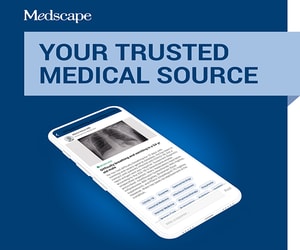Nov. 17, 2005 — The U.S. Food and Drug Administration (FDA) has approved deferasirox tablets for oral suspension for the treatment of chronic transfusional hemosiderosis in patients aged two years and older; an intravenous route of administration for pegaspargase injection; and a new indication for ertapenem injection, allowing its use for the treatment of moderate to severe complicated foot infection due to designated pathogens in diabetic patients without osteomyelitis.
Deferasirox (Exjade) Oral Iron Chelation Therapy for Use in Adults and Children
On Nov. 2, the FDA approved deferasirox (Exjade tablets for oral suspension, made by Novartis Pharmaceutical Corp.) for the treatment of chronic transfusional hemosiderosis in patients aged two years and older. It is the first orally administered medication to be approved for this indication.
The approval was based on a priority review of data from clinical trials in more than 1,000 transfused adults and children, showing that administration of 20 to 30 mg/kg of deferasirox daily led to the maintenance or reduction of iron burden in transfused patients with thalassemia, sickle cell disease, and other rare anemias and myelodysplastic syndromes.
The most frequently reported adverse events were transient in nature and included mild to moderate nausea, vomiting, diarrhea, abdominal pain, skin rash, and dose-dependent increases in serum creatinine. As with deferoxamine injection (Desferal, made by Novartis), deferasirox was associated with a low incidence of ocular and auditory disturbances.
Kidney and liver function should be monitored, and hearing and vision tested prior to and during treatment with deferasirox.
According to a company news release, availability of the oral formulation is expected to improve compliance with iron chelation therapy in patients unwilling to submit to deferoxamine subcutaneous infusions lasting eight to 12 hours per night, on five to seven nights per week.
Deferasirox was previously approved as an orphan drug by the FDA, a designation also approved in Switzerland, Australia, and the European Union. Priority review of the drug for traditional approval is ongoing in Switzerland, Canada, Australia, and New Zealand.
Intravenous Route of Administration for Pegaspargase Injection (Oncaspar)
The FDA approved in November an intravenous route of administration for pegaspargase injection (Oncaspar, made by Enzon Pharmaceuticals, Inc.). The pediatric product was previously approved for delivery via intramuscular injection, which is often painful to patients.
Pegaspargase is indicated for use in conjunction with other chemotherapeutics for the treatment of acute lymphoblastic lymphoma in patients who are hypersensitive or allergic to native forms of L-asparaginase.
Compared with native forms, pegaspargase is associated with decreased immunogenicity and an increased half-life that allows for its bimonthly rather than biweekly administration.
Once-Daily Ertapenem Injection (Invanz) for Diabetic Foot Infections
On Oct. 14, the FDA approved a new indication for once-daily ertapenem injection (Invanz, made by Merck & Co., Inc.), allowing its use for the treatment of moderate to severe complicated foot infection due to designated pathogens in diabetic patients without osteomyelitis.
Pathogens included in the indication include Staphylococcus aureus (methicillin-susceptible isolates only), Streptococcus agalactiae, Streptococcus pyogenes, Escherichia coli, Klebsiella pneumoniae, Proteus mirabilis, Bacteroides fragilis, Peptostreptococcus species, Porphyromonas asaccharolytica, and Prevotella bivia.
The approval was based on data from a prospective, randomized, double-blind clinical trial (SIDESTEP) that compared the clinical efficacy of intravenous ertapenem and piperacillin/tazobactam in 586 adult patients with diabetic foot infections.
In the study, patients received either ertapenem, 1 g daily, or piperacillin/tazobactam, 3.375 g every six hours for a minimum of five days, after which patients could switch to oral amoxicillin/clavulanate for up to 23 additional days.
Adjunctive treatment such as debridement was available to all patients, and open-label vancomycin was added to the regimen if enterococci or methicillin-resistant S aureus (MSRA) was among the pathogens isolated or if the patient had a history of MSRA infection and additional therapy was indicated.
Results at 10 days posttherapy among evaluable patients (n = 445) showed similar clinical response rates between the ertapenem and piperacillin/tazobactam groups (75.0% vs 70.8%). Rates of microbiological response and adverse events were likewise similar between groups.
The most commonly reported adverse events in ertapenem-treated patients included diarrhea, infused vein complications, nausea, headache, vaginitis in women, phlebitis/thrombophlebitis, and vomiting.
Ertapenem injection was previously approved for the treatment of complicated intra-abdominal infections, complicated skin/skin structure infections, community-acquired pneumonia, complicated urinary tract infections, and acute pelvic infections caused by susceptible organisms.
Reviewed by Gary D. Vogin, MD
Medscape Medical News © 2005В
Cite this: Yael Waknine.В FDA Approvals: Exjade, Oncaspar, InvanzВ -В MedscapeВ -В NovВ 17,В 2005.


Comments